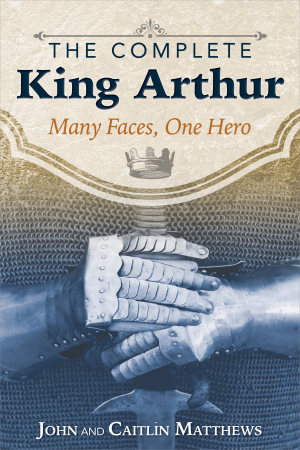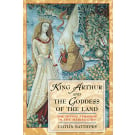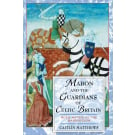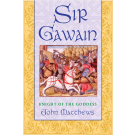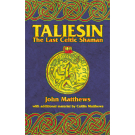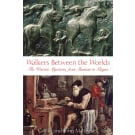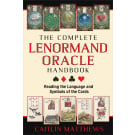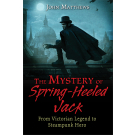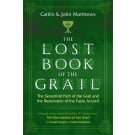Availability:
In Stock
- Pages: 424
- Book Size: 6 x 9
- ISBN-13: 9781620555996
- Imprint: Inner Traditions
- On Sale Date: May 16, 2017
- Format: Paperback Book
- Illustrations: Includes 8-page color insert and 4 b&w illustrations
Few legends have had the enduring influence of those surrounding King Arthur. Presenting the culmination of more than 40 years’ research, John and Caitlín Matthews examine the historical and mythological evidence for every major theory about the existence of Arthur, piecing together the many fragments that constitute his image.
A comprehensive examination of the historical and mythological evidence for every major theory about King Arthur
• Explores the history of every Arthur candidate and the geographical arguments that have placed him in different locations
• Examines 1,800 years of evidence for Arthur’s life and the famous series of 12 battles fought against the Saxons in the 6th century
• Reconstructs the history of the 6th century in Britain, when the first references to Arthur and the core events of his reign appear
Few legends have had the enduring influence of those surrounding King Arthur. Many believe the stories are based on historical truth. For others Arthur represents the archetype of the brilliant monarch reigning over a fairy-tale kingdom, offering his knights the opportunity to prove their mettle in battle and find gnostic illumination through initiation into sacred mysteries like that of the Grail.
Presenting the culmination of more than 40 years’ research, John and Caitlín Matthews examine the historical and mythological evidence for every major theory about the existence of King Arthur. Drawing on modern techniques in archaeology and scholarship, they reconstruct the history of the 6th century in Britain, the period when the first unambiguous references to Arthur appear. They explore the history of every Arthur candidate, the geographical arguments that have placed him in different locations, and the evidence for his life and famous battles fought against the Saxons. Was the greatest British hero of all time not a king but a 2nd-century Roman officer active around Hadrian’s Wall in Cumbria? A 5th-century soldier who operated in areas as far apart as Cornwall, Wales, Scotland, or Brittany? Or an entirely mythical fiction that provided a figure of light during a dark period of British history?
Examining other literary figures from the 5th century such as Vortigern and Ambrosius, the authors also break down the plots of all the major Arthurian romances, including those by Chretien de Troyes, Sir Thomas Malory, and Robert de Boron, to reveal the historical events they are based on. Piecing together the many fragments that constitute the image of Arthur, both the man and the myth, the authors show how each face of Arthur has something to offer and how his modern popularity proves the enduring power of the hero-myth, truly earning Arthur the title he first received in the 15th century: The Once and Future King.
• Explores the history of every Arthur candidate and the geographical arguments that have placed him in different locations
• Examines 1,800 years of evidence for Arthur’s life and the famous series of 12 battles fought against the Saxons in the 6th century
• Reconstructs the history of the 6th century in Britain, when the first references to Arthur and the core events of his reign appear
Few legends have had the enduring influence of those surrounding King Arthur. Many believe the stories are based on historical truth. For others Arthur represents the archetype of the brilliant monarch reigning over a fairy-tale kingdom, offering his knights the opportunity to prove their mettle in battle and find gnostic illumination through initiation into sacred mysteries like that of the Grail.
Presenting the culmination of more than 40 years’ research, John and Caitlín Matthews examine the historical and mythological evidence for every major theory about the existence of King Arthur. Drawing on modern techniques in archaeology and scholarship, they reconstruct the history of the 6th century in Britain, the period when the first unambiguous references to Arthur appear. They explore the history of every Arthur candidate, the geographical arguments that have placed him in different locations, and the evidence for his life and famous battles fought against the Saxons. Was the greatest British hero of all time not a king but a 2nd-century Roman officer active around Hadrian’s Wall in Cumbria? A 5th-century soldier who operated in areas as far apart as Cornwall, Wales, Scotland, or Brittany? Or an entirely mythical fiction that provided a figure of light during a dark period of British history?
Examining other literary figures from the 5th century such as Vortigern and Ambrosius, the authors also break down the plots of all the major Arthurian romances, including those by Chretien de Troyes, Sir Thomas Malory, and Robert de Boron, to reveal the historical events they are based on. Piecing together the many fragments that constitute the image of Arthur, both the man and the myth, the authors show how each face of Arthur has something to offer and how his modern popularity proves the enduring power of the hero-myth, truly earning Arthur the title he first received in the 15th century: The Once and Future King.
3
Arthur of the Battles
Defender of the Land
A War Leader’s Rise to Power
In the written sources Arthur appears as a dux bellorum or “leader of battles,” not yet a king. In describing the “Wonders of Britain,” Nennius calls Arthur simply a miles, or soldier.1 In the Vatican recension of Historia Brittonum, we hear that: “although many were more noble than he, Arthur was the leader and victor in twelve battles.”2 How did a man so obscure rise from the ranks to gain twelve famous victories? How he came to this position, what military methods he used, who were his allies and enemies will be examined here as we seek the motivations for Arthur’s battles beyond the bare accounts of the chronicles.
Gildas’s insistence that Ambrosius was the victor at Badon is not necessarily at odds with Nennius’s account of Arthur’s victory. If Ambrosius had been Arthur’s commander in chief, both men could have taken part in the battle and could therefore both be said to be victorious. In the common parlance of war, a battle is normally attributed to its commander in chief, not to any subordinate general, however valiant, although special campaigns might single out an individual as particularly successful.
Was Arthur known to his contemporaries as “Arthur of Badon?” The historian William of Malmesbury, writing in the first quarter of the twelfth century, gives us a brief glimpse of Arthur at the side of Ambrosius:
When (Vortigern) died, the British strength decayed; their hopes becoming diminished, fled; and they would have soon perished altogether, had not Ambrosius, the sole survivor of the Romans, who became monarch after Vortigern, quelled the presumptuous barbarians by the powerful aid of warlike Arthur. This is that Arthur of whom the Britons fondly fable, even to the present day: a man worthy to be celebrated, not by idle fictions, but in authentic history. He, indeed, for a long time upheld the sinking state, and roused the broken spirit of his countrymen to war. Finally, at the siege of Mount Badon, relying on an image of the Virgin which he had affixed to his armour, he engaged nine hundred of the enemy singlehanded, and dispersed them with incredible slaughter.3
The passage is largely attributable to Nennius’s Historia Brittonum, and the variations may be of William’s own creation, but even here we have “a warlike Arthur,” not a king.
We do not know the nature of Ambrosius’s relationship to Arthur. Had Arthur been a relative this would surely have been remembered in the genealogical record. In terms of the military emergency in which Britain found itself, it is possible that Ambrosius, acculturated in the Roman way, adopted Arthur. Adoption of a successor was a Roman custom among both its emperors as well as its citizens, recognized within Roman law so that childless men could appoint responsible inheritors. There are two obstacles to this, for Ambrosius had descendants, according to Gildas, and if Arthur had been formally adopted, we would expect to have some account of him as “Arthur, son of Ambrosius.”
We have already seen how Vortigern continued to rule as king while his son Vortimer acted as the active general of his forces only a generation before Arthur’s time, and it is more likely that Arthur was Ambrosius’s military successor rather than his adopted son. Ambrosius Aurelianus is a resoundingly Roman name with no British equivalent until Nennius calls him Emrys Guletic, or “Ambrosius the Sovereign.” In the mid-fifth century British men still bore Latinate names, but successive generations favored British ones. What if Ambrosius had a British military nickname like “Uter Pendragon” or “the Terrible Draco-Leader.” Such a nickname would explain why Ambrosius is associated with the story of Vortigern’s tower and the dragons as well as providing a battle cry to rally behind. Nennius’s story about a cloth with two worms upon it could well represent the two standards of the British and Saxons. A draco standard, so much a part of the legionary insignia of Lucius Artorius Castus, was the rallying point both for the British and the Sarmatians he lead.
If such a nom de guerre had been applied to Ambrosius, it might well have led to the later association between Uther and Arthur as father and son; for, while it is clear that Arthur is no one’s son in the early record, both he and his predecessor bear the name “Pendragon” in later legend. The draco standard of the legions gradually mutated into the red dragon emblem of Gwynedd, still in use today as the national standard of Wales.
So where did Arthur of the Battles originate? There is a poem in the Book of Taliesin that gives us a clue to his antecedents and makes powerful sense. Already mentioned in chapter 1, where it has been seen as complementary evidence for the Roman origins of Arthur, “Kadeir Teyrnon” may also support the antecedents of a fifth-century northern Arthur. The poem discusses the ruler of Britain as a man born and bred on the Wall as well as one militarily qualified to its supervision.
Declare the clear ode
In inspiration’s own metre:
A man sprung of two authors,
Of a cavalry wing’s steel.
His spear and his wisdom,
His judicious course,
His kingly sovereignty
His assault over the Wall,
His rightful seat Amongst the defenders of the Wall. . . .
From the slaughter of chieftains,
From the destruction of armies,
From the loricated legion,
Sprang the Guledic,
Around the fierce old boundary.4
The “fierce old boundary” is none other than Hadrian’s Wall (see plate 3). This poem suggests a man who was born either of native stock and Roman lineage or perhaps one who is half-native and half-foreigner; we might take our pick from the men of Rheged, the Gododdin, or of Pictish or Dalriadan origin, which might help explain from whence the name “Arthur” was first introduced.
Arthur of the Battles
Defender of the Land
A War Leader’s Rise to Power
In the written sources Arthur appears as a dux bellorum or “leader of battles,” not yet a king. In describing the “Wonders of Britain,” Nennius calls Arthur simply a miles, or soldier.1 In the Vatican recension of Historia Brittonum, we hear that: “although many were more noble than he, Arthur was the leader and victor in twelve battles.”2 How did a man so obscure rise from the ranks to gain twelve famous victories? How he came to this position, what military methods he used, who were his allies and enemies will be examined here as we seek the motivations for Arthur’s battles beyond the bare accounts of the chronicles.
Gildas’s insistence that Ambrosius was the victor at Badon is not necessarily at odds with Nennius’s account of Arthur’s victory. If Ambrosius had been Arthur’s commander in chief, both men could have taken part in the battle and could therefore both be said to be victorious. In the common parlance of war, a battle is normally attributed to its commander in chief, not to any subordinate general, however valiant, although special campaigns might single out an individual as particularly successful.
Was Arthur known to his contemporaries as “Arthur of Badon?” The historian William of Malmesbury, writing in the first quarter of the twelfth century, gives us a brief glimpse of Arthur at the side of Ambrosius:
When (Vortigern) died, the British strength decayed; their hopes becoming diminished, fled; and they would have soon perished altogether, had not Ambrosius, the sole survivor of the Romans, who became monarch after Vortigern, quelled the presumptuous barbarians by the powerful aid of warlike Arthur. This is that Arthur of whom the Britons fondly fable, even to the present day: a man worthy to be celebrated, not by idle fictions, but in authentic history. He, indeed, for a long time upheld the sinking state, and roused the broken spirit of his countrymen to war. Finally, at the siege of Mount Badon, relying on an image of the Virgin which he had affixed to his armour, he engaged nine hundred of the enemy singlehanded, and dispersed them with incredible slaughter.3
The passage is largely attributable to Nennius’s Historia Brittonum, and the variations may be of William’s own creation, but even here we have “a warlike Arthur,” not a king.
We do not know the nature of Ambrosius’s relationship to Arthur. Had Arthur been a relative this would surely have been remembered in the genealogical record. In terms of the military emergency in which Britain found itself, it is possible that Ambrosius, acculturated in the Roman way, adopted Arthur. Adoption of a successor was a Roman custom among both its emperors as well as its citizens, recognized within Roman law so that childless men could appoint responsible inheritors. There are two obstacles to this, for Ambrosius had descendants, according to Gildas, and if Arthur had been formally adopted, we would expect to have some account of him as “Arthur, son of Ambrosius.”
We have already seen how Vortigern continued to rule as king while his son Vortimer acted as the active general of his forces only a generation before Arthur’s time, and it is more likely that Arthur was Ambrosius’s military successor rather than his adopted son. Ambrosius Aurelianus is a resoundingly Roman name with no British equivalent until Nennius calls him Emrys Guletic, or “Ambrosius the Sovereign.” In the mid-fifth century British men still bore Latinate names, but successive generations favored British ones. What if Ambrosius had a British military nickname like “Uter Pendragon” or “the Terrible Draco-Leader.” Such a nickname would explain why Ambrosius is associated with the story of Vortigern’s tower and the dragons as well as providing a battle cry to rally behind. Nennius’s story about a cloth with two worms upon it could well represent the two standards of the British and Saxons. A draco standard, so much a part of the legionary insignia of Lucius Artorius Castus, was the rallying point both for the British and the Sarmatians he lead.
If such a nom de guerre had been applied to Ambrosius, it might well have led to the later association between Uther and Arthur as father and son; for, while it is clear that Arthur is no one’s son in the early record, both he and his predecessor bear the name “Pendragon” in later legend. The draco standard of the legions gradually mutated into the red dragon emblem of Gwynedd, still in use today as the national standard of Wales.
So where did Arthur of the Battles originate? There is a poem in the Book of Taliesin that gives us a clue to his antecedents and makes powerful sense. Already mentioned in chapter 1, where it has been seen as complementary evidence for the Roman origins of Arthur, “Kadeir Teyrnon” may also support the antecedents of a fifth-century northern Arthur. The poem discusses the ruler of Britain as a man born and bred on the Wall as well as one militarily qualified to its supervision.
Declare the clear ode
In inspiration’s own metre:
A man sprung of two authors,
Of a cavalry wing’s steel.
His spear and his wisdom,
His judicious course,
His kingly sovereignty
His assault over the Wall,
His rightful seat Amongst the defenders of the Wall. . . .
From the slaughter of chieftains,
From the destruction of armies,
From the loricated legion,
Sprang the Guledic,
Around the fierce old boundary.4
The “fierce old boundary” is none other than Hadrian’s Wall (see plate 3). This poem suggests a man who was born either of native stock and Roman lineage or perhaps one who is half-native and half-foreigner; we might take our pick from the men of Rheged, the Gododdin, or of Pictish or Dalriadan origin, which might help explain from whence the name “Arthur” was first introduced.
Acknowledgments
Dates, Names, and Time Line of Significant Events
Introduction: The Once and Future King
1 Arthur of Rome: Commander of Legions
2 Arthur of the Shadows: A Hero in the Making
3 Arthur of the Battles: Defender of the Land
4 Arthur of Myth: Granter of Quests
5 Arthur of Britain: The Making of a King
6 King Arthur: Lord of Camelot
7 Arthur of Fable: A Nation’s Hero
8 Arthur Everywhere: Rex Quondam, Rexque Futurus
Appendix: “The Sovereign’s Chair”
Notes
Bibliography/Further Reading
Arthurian Societies and Resources
Index
Dates, Names, and Time Line of Significant Events
Introduction: The Once and Future King
1 Arthur of Rome: Commander of Legions
2 Arthur of the Shadows: A Hero in the Making
3 Arthur of the Battles: Defender of the Land
4 Arthur of Myth: Granter of Quests
5 Arthur of Britain: The Making of a King
6 King Arthur: Lord of Camelot
7 Arthur of Fable: A Nation’s Hero
8 Arthur Everywhere: Rex Quondam, Rexque Futurus
Appendix: “The Sovereign’s Chair”
Notes
Bibliography/Further Reading
Arthurian Societies and Resources
Index
John and Caitlín Matthews have been studying the Arthurian legends and their background for more than 40 years. Recognized authorities on myths and legends of the Celtic tradition, they are the authors of more than 100 books, both separately and together, including Taliesin: The Last Celtic Shaman, Walkers Between the Worlds, King Arthur and the Goddess of the Land, and the award-winning Arthur of Albion, as well as several tarot decks and oracles. The Matthews live in Oxford, England.
"Certain figures of myth and history have an ability to touch us deeply and take up residence in our imaginations, becoming a touchstone for inspiration and inner power. King Arthur is one of these. Whatever his historical veracity may be, he is a cultural icon that has lived through the centuries and continues to influence us in many ways today. In this book, John and Caitlin Matthews bring the importance of this figure to vibrant life. Far more than simply retelling familiar tales, they go deep into the spiritual, historical, literary, artistic, and mythic heart of Arthur to demonstrate most eloquently the wide reach of his cultural influence and why he continues to be the once and future king of our hopes and our imaginations." David Spengler, educator and author of Apprenticed to Spirit
“The Matthews have done it again! Here is a compact assembly of Arthurian sources from ancient Rome through the classics, including many obscure bits. A wonderful and entertaining read.” Greg Stafford, designer of the King Arthur Pendragon game
“Beautifully written and extensively researched, The Complete King Arthur provides a thorough overview of past and present examples of the tradition and the possible sources from which they sprang. Accessible to scholars and general readers alike, this study is a necessary addition to the library of anyone who loves King Arthur.” Linda A. Malcor, coauthor of From Scythia to Camelot
“What a treasure this book is, a gift of great magnitude from the Matthews to all the rest of us. I so wish I had had it when I was immersing myself in Arthur in college many decades ago. The Mathews are the rarest of writers: scholars who are poets, poets who are scholars, singers of myth and history. They understand that facts are the basis of story, but equally, story is the basis of facts. Over the years of their phenomenal body of work, they have never set aside one for the other but have fed them together, in great measure.” Rachel Pollack, author of Unquenchable Fire
"Because the Matthews have been studying Celtic traditions, including the Arthurian legends, for forty years, The Complete King Arthur really is complete." Barbara Ardinger, Ph.D., Witches & Pagans Magazine
“The Matthews have done it again! Here is a compact assembly of Arthurian sources from ancient Rome through the classics, including many obscure bits. A wonderful and entertaining read.” Greg Stafford, designer of the King Arthur Pendragon game
“Beautifully written and extensively researched, The Complete King Arthur provides a thorough overview of past and present examples of the tradition and the possible sources from which they sprang. Accessible to scholars and general readers alike, this study is a necessary addition to the library of anyone who loves King Arthur.” Linda A. Malcor, coauthor of From Scythia to Camelot
“What a treasure this book is, a gift of great magnitude from the Matthews to all the rest of us. I so wish I had had it when I was immersing myself in Arthur in college many decades ago. The Mathews are the rarest of writers: scholars who are poets, poets who are scholars, singers of myth and history. They understand that facts are the basis of story, but equally, story is the basis of facts. Over the years of their phenomenal body of work, they have never set aside one for the other but have fed them together, in great measure.” Rachel Pollack, author of Unquenchable Fire
"Because the Matthews have been studying Celtic traditions, including the Arthurian legends, for forty years, The Complete King Arthur really is complete." Barbara Ardinger, Ph.D., Witches & Pagans Magazine
ANCIENT MYSTERIES
“The Mathews are the rarest of writers: scholars who are poets, poets who are scholars, singers of myth and history. They understand that facts are the basis of story, but equally, story is the basis of facts.”
--Rachel Pollack, author of Unquenchable Fire, winner of the Arthur C. Clarke Award
Few legends have had the enduring influence of those surrounding King Arthur. Many believe the stories are based on historical truth. For others Arthur represents the archetype of the brilliant monarch reigning over a fairy-tale kingdom, offering his knights the opportunity to prove their mettle in battle and find gnostic illumination through initiation into sacred mysteries like that of the Grail.
Presenting the culmination of more than 40 years’ research, John and Caitlín Matthews examine the historical and mythological evidence for every major theory about the existence of King Arthur. Drawing on modern techniques in archaeology and scholarship, they reconstruct the history of the 6th century in Britain, the period when the first unambiguous references to Arthur appear. They explore the history of every Arthur candidate, the geographical arguments that have placed him in different locations, and the evidence for his life and famous battles fought against the Saxons. Was the greatest British hero of all time not a king but a 2nd-century Roman officer active around Hadrian’s Wall in Cumbria? Was he a 5th-century soldier who operated in areas as far apart as Cornwall, Wales, Scotland, or Brittany? Or was he an entirely mythical fiction that provided a figure of light during a dark period of British history?
Examining other literary figures from the 5th century such as Vortigern and Ambrosius, the authors also break down the plots of all the major Arthurian romances, including those by Chrétien de Troyes, Sir Thomas Malory, and Robert de Boron, to reveal the historical events upon which they are based. Piecing together the many fragments that constitute the image of Arthur, both the man and the myth, the authors show how each face of Arthur has something to offer and how his modern popularity proves the enduring power of the hero-myth, truly earning Arthur the title he first received in the 15th century: The Once and Future King.
JOHN and CAITLIN MATTHEWS have been studying the Arthurian legends and their background for more than 40 years. Recognized authorities on myths and legends of the Celtic tradition, they are the authors of more than 100 books, both separately and together, including Taliesin: The Last Celtic Shaman, Walkers Between the Worlds, King Arthur and the Goddess of the Land, and the award-winning Arthur of Albion, as well as several tarot decks and oracles. The Matthews live in Oxford, England.
“The Mathews are the rarest of writers: scholars who are poets, poets who are scholars, singers of myth and history. They understand that facts are the basis of story, but equally, story is the basis of facts.”
--Rachel Pollack, author of Unquenchable Fire, winner of the Arthur C. Clarke Award
Few legends have had the enduring influence of those surrounding King Arthur. Many believe the stories are based on historical truth. For others Arthur represents the archetype of the brilliant monarch reigning over a fairy-tale kingdom, offering his knights the opportunity to prove their mettle in battle and find gnostic illumination through initiation into sacred mysteries like that of the Grail.
Presenting the culmination of more than 40 years’ research, John and Caitlín Matthews examine the historical and mythological evidence for every major theory about the existence of King Arthur. Drawing on modern techniques in archaeology and scholarship, they reconstruct the history of the 6th century in Britain, the period when the first unambiguous references to Arthur appear. They explore the history of every Arthur candidate, the geographical arguments that have placed him in different locations, and the evidence for his life and famous battles fought against the Saxons. Was the greatest British hero of all time not a king but a 2nd-century Roman officer active around Hadrian’s Wall in Cumbria? Was he a 5th-century soldier who operated in areas as far apart as Cornwall, Wales, Scotland, or Brittany? Or was he an entirely mythical fiction that provided a figure of light during a dark period of British history?
Examining other literary figures from the 5th century such as Vortigern and Ambrosius, the authors also break down the plots of all the major Arthurian romances, including those by Chrétien de Troyes, Sir Thomas Malory, and Robert de Boron, to reveal the historical events upon which they are based. Piecing together the many fragments that constitute the image of Arthur, both the man and the myth, the authors show how each face of Arthur has something to offer and how his modern popularity proves the enduring power of the hero-myth, truly earning Arthur the title he first received in the 15th century: The Once and Future King.
JOHN and CAITLIN MATTHEWS have been studying the Arthurian legends and their background for more than 40 years. Recognized authorities on myths and legends of the Celtic tradition, they are the authors of more than 100 books, both separately and together, including Taliesin: The Last Celtic Shaman, Walkers Between the Worlds, King Arthur and the Goddess of the Land, and the award-winning Arthur of Albion, as well as several tarot decks and oracles. The Matthews live in Oxford, England.



